HHS Adult and Adolescent Antiretroviral Treatment Guidelines Updated
The HHS Panel on Antiretroviral Guidelines for Adults and Adolescents has released an updated version of the Guidelines for the Use of Antiretroviral Agents in Adults and Adolescents Living with HIV.
Key changes to the guidelines include the following:
- Preliminary data suggest that there is an increased risk of neural tube defects in infants born to women who were receiving the integrase strand transfer inhibitor (INSTI) dolutegravir (DTG) at the time of conception. In response, several sections in the Adult and Adolescent Antiretroviral (ARV) Guidelines have been updated to provide guidance for clinicians who are considering the use of DTG or other INSTIs in individuals who are pregnant, or in those of childbearing potential who plan to get pregnant or who are sexually active and not using effective contraception.
- Several changes have been made to the recommendations for initial ARV regimens in the What to Start section.
- Bictegravir is a new INSTI that is approved by the Food and Drug Administration (FDA) as part of the single-tablet regimen bictegravir/tenofovir alafenamide/emtricitabine (BIC/TAF/FTC). This regimen is classified as a Recommended Initial Regimen for Most People with HIV.
- Doravirine, a new non-nucleoside reverse transcriptase inhibitor, was recently approved by the FDA. The single-tablet regimen doravirine/tenofovir disoproxil fumarate/lamivudine (DOR/TDF/3TC) and DOR plus TAF/FTC have been classified as Recommended Initial Regimens in Certain Clinical Situations.
- The two-drug regimen DTG plus 3TC is now one of the regimens to consider when abacavir, TAF, or TDF cannot be used or are not optimal.
- New information has been added to the Drug-Resistance Testing section regarding the use of HIV-1 proviral DNA genotypic resistance tests to identify drug resistance mutations, especially in the setting of low-level viremia or when plasma HIV RNA is below the limit of detection.
- The Virologic Failure section now includes a review of clinical trial data on the use of ibalizumab, a newly approved CD4 post-attachment inhibitor, in persons with multidrug-resistant HIV.
- The title of the Regimen Switching in the Setting of Virologic Suppression section has been changed to Optimizing Antiretroviral Therapy in the Setting of Viral Suppression to better reflect the rationale for regimen changes in this setting.
- The Exposure-Response Relationship and Therapeutic Drug Monitoring section has been removed from the guidelines. The subsection regarding the role of therapeutic drug monitoring in managing drug-drug interactions has been moved to the Drug-Drug Interactions section of the guidelines.
- Several tables in the guidelines have been updated with new data, as well as information related to BIC and DOR.
For a complete list of guideline updates, please see What's New in the Guidelines. Additions and revisions are also highlighted in yellow throughout the PDF version of the guidelines.
To view or download the guidelines, go to the Adult and Adolescent ARV Guidelines section of AIDSinfo’s website. The guideline tables and the boxed recommendations can also be downloaded as separate PDF files.
Send Comments on the Revised Guidelines to AIDSinfo
Feedback on the revised Guidelines for the Use of Antiretroviral Agents in Adults and Adolescents Living with HIV is welcome. Please email your comments with the subject line “Comments on the Adult and Adolescent ARV Guidelines” to ContactUs@aidsinfo.nih.gov by November 8, 2018.



